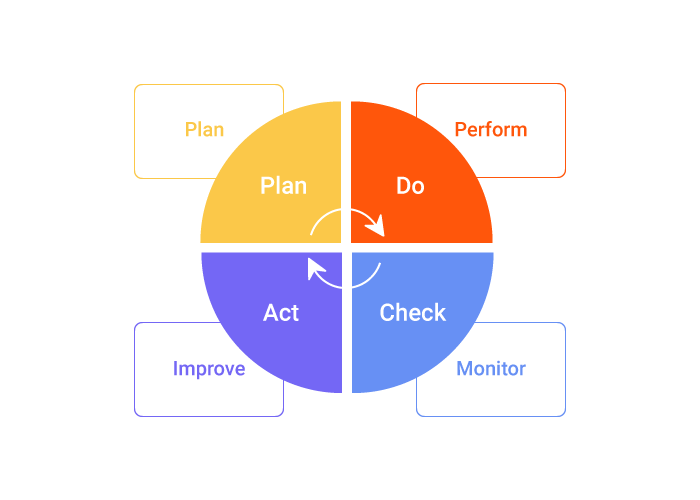
Enterprises implementing a quality management system, the processes should be established, implemented, and handled in a proper way to deliver products and services to the customers. Irrespective of how you carry out your business processes, there is always a better scope for enhancement. Having an efficient process can make your business more profitable and improves customer satisfaction as well. For a streamlined business process, it’s vital to hire process owners.
To thoroughly understand the key roles and responsibilities of a process owner, let’s take a closer look at their responsibilities, characteristics, skills, and competencies.
Process Owner- Definition
Process owners are a vital part of Six Sigma projects and managing the process within the organization. They get solutions for the projects from the development team and are responsible for the improved process.
Process owners are held responsible for the process design. To be more specific, how the process is carried out, how it is assessed, and how it actually interacts with other processes. In fact, this responsibility is considered to be a continuing task. The process owners have responsibility for the processes involved, i.e. end-to-end processes.
It’s the responsibility of the process owner to ensure that business processes are carried out as per the planning and subsequent results are incorporated into the upcoming stages in the process. So the job role of a process owner becomes important when the business tries to improve its processes.
The job role of the Process Owner involves various tasks such as designing, implementing and improving the process. They choose Key Performance Indicators (KPIs) to check whether the process improvement plans are working as they were supposed to be.

The process owners can make use of the PDCA methodology to improve their business processes.
Plan-Do-Check-Act (PDCA) is a recognized approach to help the teams to plan and execute a solution to the problem. Various members across the enterprise can use this method by using their experience and knowledge in the domain. The PDCA process involves testing all possible solutions to a problem, evaluating the results, and implementing the ones that work.
Plan – Identify the issue and plan how you would like to deal with it.
Do – Implementing the solution and gather the data for analysis.
Check – Analyse the results
Act – Implement the solution if it is successful
Characteristics of a Process Owner in Six Sigma Projects
Here are a few characteristics of a process owner in Six Sigma projects:
- Team Leader
It’s the concern of the process owner to set goals and targets for the team, considering business policies and processes. They encourage the team towards achieving performance and set a goal-oriented career path for the team.
- SME
The process owner in Six Sigma is thoroughly knowledgeable of the entire process, which includes raw materials, resources required, customer and supplier requirements, communication with other processes, and yet more.
- Training Management and Feedback
He is responsible for ensuring that the team members and leads possess ample knowledge and skills. Some of his activities include identifying the Lean Six Sigma training requirements, assessing the candidate’s skills while hiring, providing performance feedback to the team, and preparing the training curriculum.
- Process Performer
The process owner in Six Sigma is responsible for various activities like profit and loss accounts, changes to be made in the process, preventive measures to be taken, profit and loss incurred, metrics, and cost incurred.
Skills and Competencies of a Process Owner
Here is a list of skills and competencies that a process owner is Six Sigma should possess:
- Knowledge
Having ample knowledge and awareness about the project you are working on will help you to take important decisions and provides general guidance as well.
- Expertise
Having knowledge along with skills and experience will help you to take directional decisions, take the lead ahead, and set policy.
- Skill
Having knowledge and expertise to work according to the project, provide coaching to others, and take other such general decisions.
Roles and Responsibilities of a Process Owner in Six Sigma
A process owner in Six Sigma is responsible for managing the process change and process performance:
- A process owner is responsible for defining the process vision, mission, objectives, goals, KPIs (Key Performance Indicators), and essential measures associated with the organizational strategies
- A Process Owner in Six Sigma is responsible to ensure appropriate process designs are incorporated which includes appropriate business requirements as well
- Within the business value chain, the process owner should synchronize process improvement plans with others
- The Process Owner is responsible to maintain the same level of improvements attained during the course of the Six Sigma project
- The process owner helps the project lead in creating the required document
Also read how the role of leadership in a six sigma team impacts the standars of quality in an organization!
Salary Insights
Is Six Sigma Process Owner the best paying job? Are process owners the highly paid individuals? These two queries are quite tedious in answering. So, let’s find out the salary range that Process Owners are earning.
The remuneration of a process owner varies from country to country.
- United Kingdom
- India
Conclusion
The involvement of a process owner in a project will help with more than a single process improvement. They contribute to the organization’s way of doing business by promoting cultural change and process thinking at various levels. The change happens and benefits the organization only when individuals and teams are truly aligned with industry-recognized Quality Management training programs. This overhaul of knowledge in managing business-critical projects through various methodologies and frameworks leads to greater customer satisfaction and the high quality of products delivered.
Some of the popular certification training programs under quality management are:


















